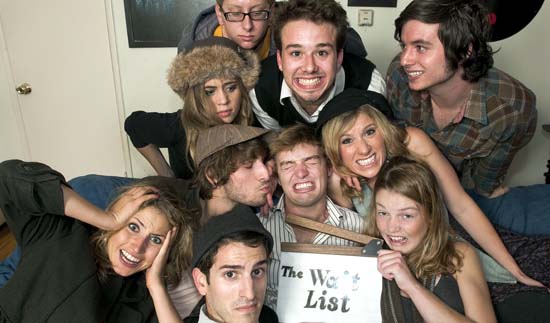Improv comedy was once an active part of the student-body culture on UCLA’s campus. Today, however, improv groups are much harder to come across.
BUICK, for example, was once a prominent student improv group that had to disband after losing key members.
“There was a turnover, and we didn’t audition enough people to come in, so there were only (a few) people who could actually keep doing it,” said Anne Lane, a fourth-year theater student and former manager of BUICK.
For those groups that have survived, however, one key to perseverance lies in having a distinct purpose or objective behind their activities.
This is the case for Lapu, the Coyote that Cares Theatre Company, UCLA’s first Asian American theater group, which was founded in 1995.
Though LCC does not accept members based on race, its purpose is to concentrate on relevant issues facing the Asian American community.
“Our group strives to break the Asian stereotypes in the entertainment industry while also serving as a launching pad for Asian Americans to find their way into the industry,” said Jerry Fang, a fourth-year sociology student and one of LCC’s current producers.
The group puts on one main variety show each quarter as well as more informal sketch and improv shows throughout the year.
“All of our material is written, directed, performed, designed, marketed and produced by our cast members, so every show is unique,” Fang said.
And although LCC is one of only a few groups to survive UCLA’s decline in student improv, a new comedy group called The Wait List hopes to reignite interest in the art and offer students a way to satisfy their theatrical comedy cravings.
Though involved in a variety of comedic ventures, including videos, sketches and even an in-process mockumentary, a major part of The Wait List’s repertoire is the improv-based shows that they put on each quarter. (Look for the next one in November.)
While many people associate improv with comedy sports games such as those played on the television show “Whose Line Is It Anyway?” the shows put on by The Wait List differ in that they feature what is called long-form improv.
According to Lane, a founding member of The Wait List, this style of improv provides for lengthier segments and greater character development.
“In long form, you take a suggestion at the beginning … (and) edit scenes and create a story using that,” Lane said.
Long-form improv also allows for greater audience involvement.
“We love to involve people in our shows and (even) bring people on stage. I feel like improv almost more than any other art form is collaborative with the audience because you’re working off of them. … It’s really cool with long-form (improv) because it’s kind of like watching a movie like “˜Babel’ or “˜Crash’ where the stories come back later,” said Chris Reinacher, a fourth-year theater student and another founding member of The Wait List.
As great as these stories may be, in order to survive, they must first find an audience.
“I do feel like there’s a lot of interest in improv … but there’s not (enough) initiative,” Lane said.
The Improv Space on Gayley Avenue may be the answer to the problem, however, as its new ownership plans to expand the amount and variety of performances that take place there and is very open to UCLA student groups taking part.
Ashley Opstad, co-owner of The Improv Space, hopes that the new venue will help to generate more interest in improv and encourage additional groups to form as well as ensure the perseverance of those already in existence.
“If (groups) don’t have a regular space to perform each week, it’s harder to keep (them) going for a long time. But if they had somewhere where they could perform weekly or even once a month, hopefully it would keep them going,” Opstad said.
